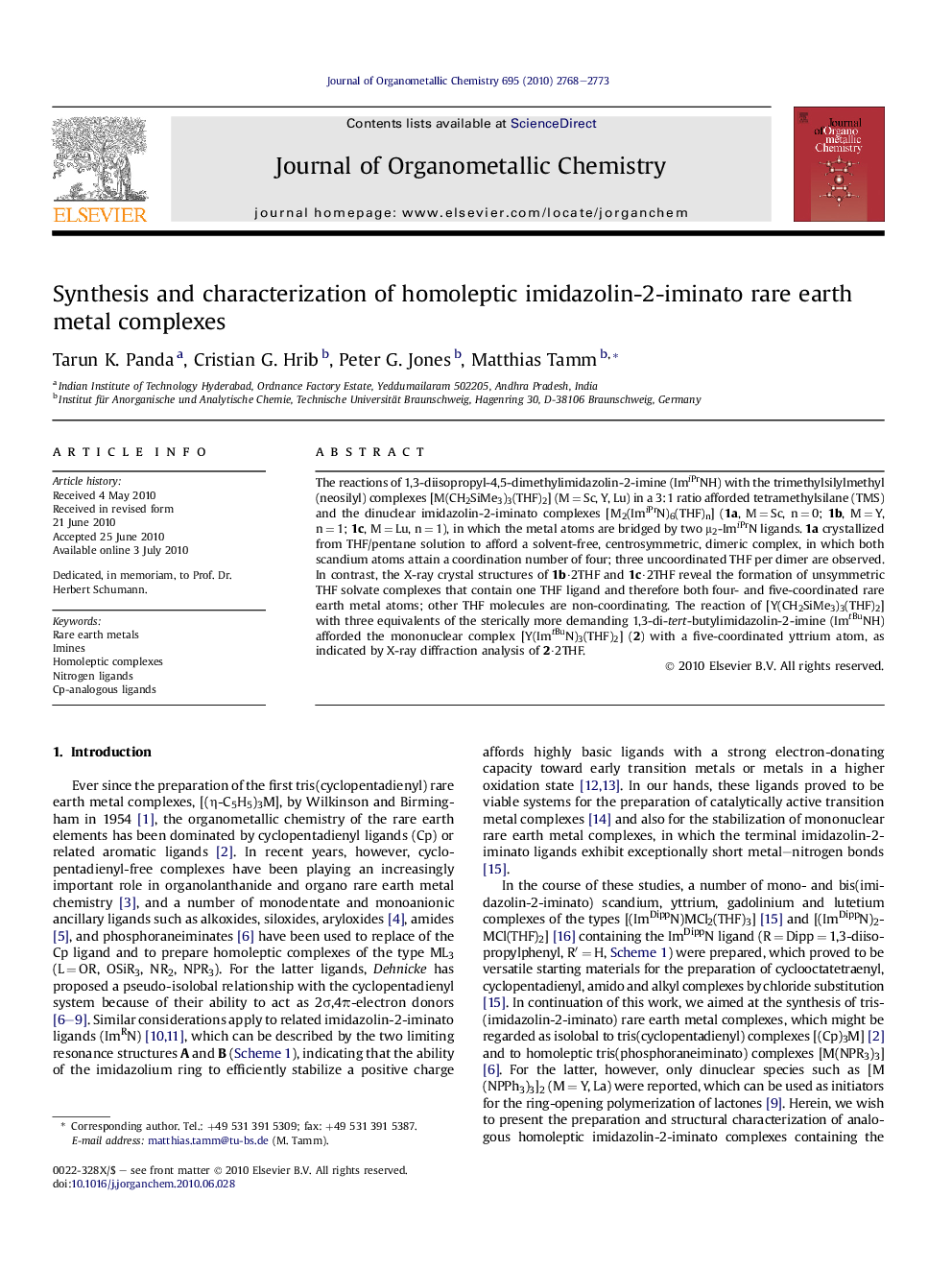| Article ID | Journal | Published Year | Pages | File Type |
|---|---|---|---|---|
| 1325539 | Journal of Organometallic Chemistry | 2010 | 6 Pages |
The reactions of 1,3-diisopropyl-4,5-dimethylimidazolin-2-imine (ImiPrNH) with the trimethylsilylmethyl (neosilyl) complexes [M(CH2SiMe3)3(THF)2] (M = Sc, Y, Lu) in a 3:1 ratio afforded tetramethylsilane (TMS) and the dinuclear imidazolin-2-iminato complexes [M2(ImiPrN)6(THF)n] (1a, M = Sc, n = 0; 1b, M = Y, n = 1; 1c, M = Lu, n = 1), in which the metal atoms are bridged by two μ2-ImiPrN ligands. 1a crystallized from THF/pentane solution to afford a solvent-free, centrosymmetric, dimeric complex, in which both scandium atoms attain a coordination number of four; three uncoordinated THF per dimer are observed. In contrast, the X-ray crystal structures of 1b·2THF and 1c·2THF reveal the formation of unsymmetric THF solvate complexes that contain one THF ligand and therefore both four- and five-coordinated rare earth metal atoms; other THF molecules are non-coordinating. The reaction of [Y(CH2SiMe3)3(THF)2] with three equivalents of the sterically more demanding 1,3-di-tert-butylimidazolin-2-imine (ImtBuNH) afforded the mononuclear complex [Y(ImtBuN)3(THF)2] (2) with a five-coordinated yttrium atom, as indicated by X-ray diffraction analysis of 2·2THF.
Graphical abstractHomoleptic tris(imidazolin-2-iminato) rare earth metal complexes are obtained from the reactions of the imines ImiPrNH and ImtBuNH with trimethylsilylmethyl (neosilyl) complexes [M(CH2SiMe3)3(THF)2] (M = Sc, Y, Lu). The ImiPrN ligand affords dinuclear species of the type [M2(ImiPrN)6(THF)n] (n = 0, M = Sc; n = 1, M = Y, Lu), whereas the more sterically demanding ImtBuN ligand produces the mononuclear complex [Y(ImtBuN)3(THF)2].Figure optionsDownload full-size imageDownload as PowerPoint slide
